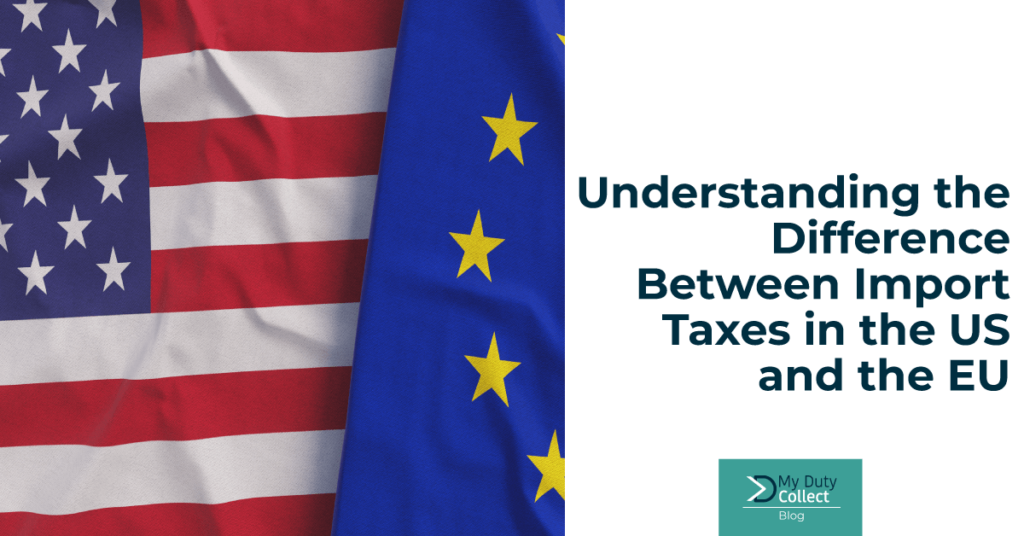When it comes to international trade, import taxes play a significant role in regulating commerce and protecting domestic industries. Understanding the differences in import tax systems between the United States (US) and the European Union (EU) can help businesses and individuals navigate the complexities of cross-border transactions. In this blog post, we will delve into the key distinctions between import taxes in the US and the EU.
–
READ MORE: Can Businesses Still Get Registered for IOSS?
–
Import Taxes in the United States
In the United States, import taxes are primarily imposed in the form of customs duties. These duties are levied on the value of imported goods and are collected by the U.S. Customs and Border Protection (CBP) agency. The duties are based on the Harmonized System (HS) codes, which classify products into specific categories for determining the applicable duty rates.
The U.S. uses an ad valorem duty system, which means that the duties are calculated as a percentage of the customs value of the imported goods. The customs value includes the cost of the goods, insurance, and freight charges. The duty rates can vary depending on factors such as the type of product, country of origin, and any applicable trade agreements or special programs.
It’s important to note that the U.S. has established free trade agreements (FTAs) with several countries, which can result in reduced or eliminated duties for eligible goods imported from those countries. Additionally, certain products may be subject to additional taxes or fees, such as anti-dumping duties or countervailing duties, if they are deemed to be unfairly traded or subsidized.
Import Taxes in the European Union
In the European Union, import taxes are primarily imposed in the form of value-added tax (VAT) and customs duties. VAT is a consumption tax that is added to the price of most goods and services at each stage of production and distribution. Unlike the U.S., the EU employs a VAT system as part of its domestic tax structure, and it applies to both domestic and imported goods.
Customs duties in the EU are similar to those in the U.S., with the rates determined based on the HS codes. These duties are typically ad valorem, calculated as a percentage of the customs value of the imported goods. The customs value includes the cost of the goods, insurance, freight charges, and any applicable handling charges.
One key difference in the EU’s import tax system is the use of the Common Customs Tariff (CCT). The CCT establishes the duty rates for imports into the EU and is applied uniformly across all EU member states. However, it’s important to note that the EU has also established free trade agreements with various countries and trade blocs, allowing for reduced or eliminated duties on eligible goods imported from those regions.
Due to the complexities and variations in import tax systems across different countries, including the United States and the European Union, this topic has caused a considerable amount of confusion. The intricate nature of customs duties, VAT, trade agreements, and the ever-changing landscape of international trade regulations can be overwhelming for businesses and individuals involved in cross-border transactions.

MyDutyCollect’s team of international tax experts will keep you updated with the latest information from relevant government agencies and trade organizations is crucial to navigating the complexities and ensuring compliance with import tax requirements.
While both the United States and the European Union impose import taxes on goods entering their respective territories, there are notable differences in their tax systems. The U.S. primarily relies on customs duties, whereas the EU levies VAT and customs duties. The U.S. uses an ad valorem duty system, while the EU employs both ad valorem customs duties and a VAT system. Additionally, both regions have established free trade agreements that can reduce or eliminate duties on eligible goods. Understanding these distinctions is crucial for businesses and individuals engaged in international trade to ensure compliance and effectively manage costs.
Subscribe to our blog and visit our website and LinkedIn page for more updates. You can also reach out to us by sending a message to info@mydutycollect.com. We will be delighted to hear from you.




